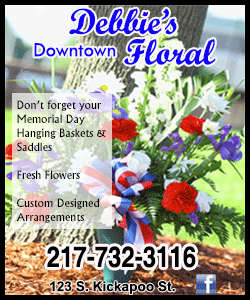Two major banks expect more pain for U.S. equities
 Send a link to a friend
Send a link to a friend
 [May 19, 2022] By
Saikat Chatterjee [May 19, 2022] By
Saikat Chatterjee
LONDON (Reuters) - Two major banks expect
more pain for the U.S. stock markets after benchmark indexes posted on
Wednesday their worst one-day losses in two years.
In a report published on Thursday, Barclays strategists said margins for
U.S. companies and their forward earnings were under pressure due to a
combination of factors, ranging from severity of China's COVID lockdowns
to the war in Ukraine and the U.S. Federal Reserve's hawkish stance.
"Given the numerous negative near-term catalysts for the SPX we believe
that the risks remain firmly stacked to the downside," they said in a
note, referring to the S&P 500.
A key drag on the index had been underwhelming results posted in the
current earnings season by the high-flying FAANG group - Meta Platforms,
Apple, Amazon.com, Netflix and Alphabet - Barclays said. The weak
results had been the largest negative contribution to the broader index
in seven years.
Moreover, fiscal stimulus unleashed during the pandemic had resulted in
record consumption of goods as consumers spent during lockdowns,
Barclays said. This had translated into strong corporate earnings in the
past two years.
Now that consumer spending was switching to services, support for
earnings would not be so strong.

Separately, Goldman Sachs strategists estimated a 35% probability of the
U.S. economy entering a recession in the next two years.
Furthermore, investors' behaviour in the U.S. stock market, rotating out
of some categories of shares and into others, suggested they were
pricing in even greater odds of a downturn.
[to top of second column] |

Traders work on the trading floor at the New York Stock Exchange
(NYSE) in Manhattan, New York City, U.S., May 18, 2022.
REUTERS/Andrew Kelly

The S&P 500 is down more than 18% so far in 2022 and the Nasdaq has fallen about
27%, dragged lower by tumbling growth stocks. Almost two-thirds of S&P 500
stocks are down 20% or more from their 52-week highs, according to Refinitiv
data.
Goldman Sachs said that in 12 recessions since World War Two, U.S. stocks had
fallen from peak to trough by a median of 24%.
A decline of that magnitude from the January peak would take stocks 11% below
current market levels. An average drop from the peak would be 18%.
Dividend futures represented a second market indicator pricing an outcome
consistent with recession, the U.S. investment bank's strategists said. Dividend
futures implied S&P 500 dividends would fall by nearly 5% in 2023.
In the past 60 years, trailing four-quarter S&P 500 dividends had never fallen
on an annual basis outside of a recession, Goldman Sachs said.
Even retail investors, typically contrarian in recent market selloff episodes,
are selling, according to data.
Intra-week selling by retail traders was the worst since March 2020, according
to JP Morgan. Charles Schwab net assets suffered outflows for the first time
since 2020.
(Reporting by Saikat Chatterjee; Editing by Bradley Perrett)
[© 2022 Thomson Reuters. All rights
reserved.]
This material may not be published,
broadcast, rewritten or redistributed.
Thompson Reuters is solely responsible for this content. |